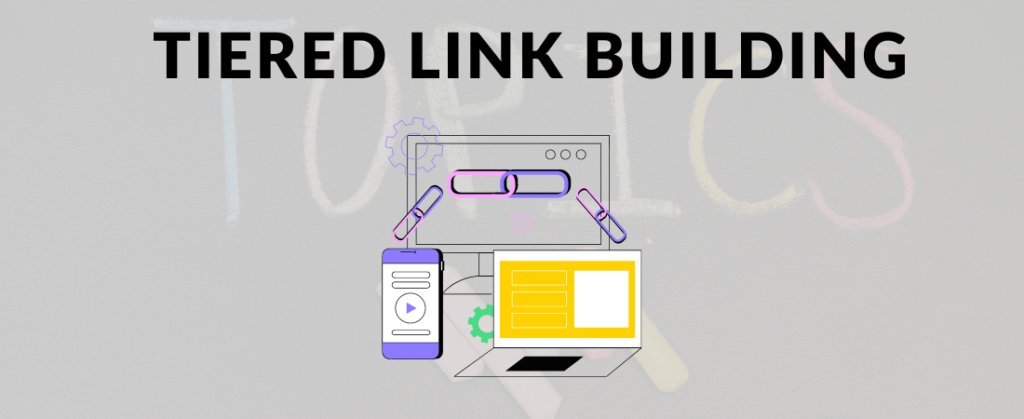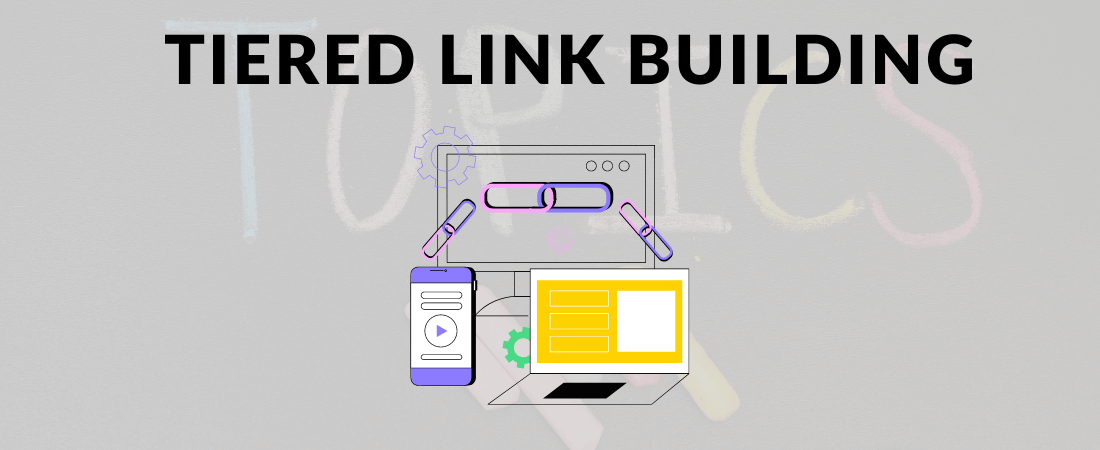
Tiered link building is a vital SEO tactic involving the strategic acquisition of backlinks from websites with varying levels of authority and relevance. Implementing a structured approach to link building can significantly enhance a website’s search engine rankings.
Search engines like Google assess a website’s authority based on the quality and quantity of incoming links. High-authority links from relevant sites carry more weight than links from low-quality sources. A tiered strategy capitalizes on this link equity concept by systematically earning backlinks from sites segmented into quality tiers.
This guide will explore tiered link building, its intended impact, and practical steps for implementation. Topics include optimizing Tier 1 links, building Tier 2 and Tier 3 links, measuring success, and avoiding common pitfalls.
What is Tiered Link Building?
Tiered link building involves obtaining links from websites categorized into three tiers based on their authority within a niche:
- Tier 1: High-authority sites like major news outlets and trusted industry publications. These links are the most influential in improving search rankings.
- Tier 2: Respected blogs and niche publications with robust traffic and engagement but less authoritative than Tier 1 sites.
- Tier 3: Low-authority sites, such as small blogs and forums. While individually less impactful, these links contribute to a diverse backlink profile.
The Importance of Expertise in Link Building
Expertise in SEO and link building ensures that the strategies implemented are effective and up-to-date with the latest industry standards. SEO professionals must stay informed about algorithm updates and best practices through continuous education, industry conferences, and certifications. This knowledge helps in crafting well-informed link-building campaigns that yield long-term benefits.
Optimizing Tier 1 Links
Securing Tier 1 links requires persistence and a strategic approach. Follow these steps:
- Research Competitors: Use tools like Ahrefs to identify high-authority sites linking to competitors.
- Compile a Target List: Create a list of 20-50 high-authority sites accepting guest posts, product reviews, and expert contributions.
- Personalized Outreach: Craft tailored pitches highlighting unique angles and relevance to the target site’s audience.
- Quality Over Quantity: Focus on securing a few high-quality links rather than numerous lower-quality ones.
Building Authority through Tier 1 Links
Tier 1 links significantly impact a website’s authority and search rankings. These links from reputable sources like major news outlets and industry-leading publications signal to search engines that your site is a trusted and credible resource. For example, a backlink from The New York Times or Forbes can substantially boost your site’s credibility and visibility.
Building Tier 2 Links
Tier 2 links come from less authoritative but still valuable sites. Goals include boosting credibility and funneling targeted traffic. Follow these steps:
- Identify Relevant Sites: Target well-trafficked blogs and niche publications.
- Automate Outreach: Use tools to streamline site prospecting and initial outreach tasks.
- Nurture Relationships: Build long-term partnerships with bloggers and niche site owners.
The Role of Tier 2 Links in SEO
Tier 2 links help diversify your backlink profile and enhance your site’s relevance within its niche. These links come from respected blogs, smaller publications, and niche directories that, while not as authoritative as Tier 1 sites, still contribute positively to your SEO efforts. They provide a steady stream of traffic and engagement from targeted audiences.
Maximizing Tier 3 Links
Tier 3 links, though less impactful individually, contribute to overall link diversity. Key points:
- Broad Outreach: Target small blogs, forums, and content aggregators.
- Automation: Leverage tools to build links at scale while ensuring relevance.
- Avoid Overoptimization: Vary anchor text and build links gradually to avoid penalties.
Value of Tier 3 Links
Tier 3 links may come from low-authority sites, but they play a crucial role in creating a natural and diverse backlink profile. These links can be easily obtained at scale and provide additional data points for search engines to assess your site’s credibility. While they should not be the primary focus of your link-building strategy, they support and enhance the efforts made in securing higher-tier links.
Ethical Considerations and Best Practices
- Avoid Black Hat Techniques: Steer clear of link schemes and low-quality networks that can lead to penalties.
- Disavow Harmful Links: Use Google’s Disavow Tool to address toxic backlinks.
- Legal Implications: Understand the potential legal risks of unethical practices.
Maintaining Trustworthiness in Link Building
Trustworthiness in link-building involves adhering to ethical practices and maintaining transparency. Avoiding manipulative tactics and focusing on building genuine relationships with reputable sites ensures long-term success and protects your site from potential penalties.
Measuring Success
Track the success of your tiered link-building campaign using these metrics:
- Domain Authority: Monitor changes in domain authority and page authority scores.
- Organic Traffic: Track increases in organic search traffic and keyword rankings.
- Conversion Rates: Assess the impact of high-quality backlinks on conversions and sales.
Common Mistakes to Avoid
- Overoptimization: Avoid targeting a concentrated group of terms for anchor text.
- Excessive Link Volume: Build links slowly and steadily to prevent overwhelming site architecture.
- Quality Over Quantity: Focus on relevance and relationship-building over rapid gains.
Conclusion
A well-executed tiered link-building strategy is essential for competitive search performance. By categorizing link prospects and prioritizing high-authority sites, brands can achieve significant improvements in search rankings and organic visibility. Patience, persistence, and adherence to ethical practices are crucial for long-term success.
Securing placements on just a handful of widely-read blogs over a year could drive more conversions than hundreds of links from marginal sites. The quality over quantity principle applies to balancing link velocity with long-term growth.
We invite readers to share their tiered link-building efforts and lessons learned in the comments. Subscribe to our newsletter for more insights and strategies.

